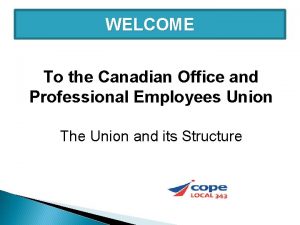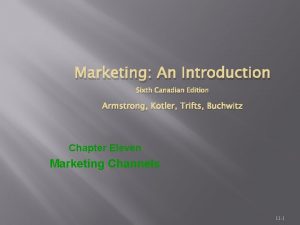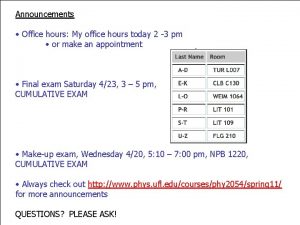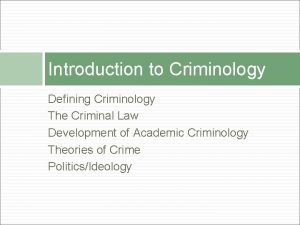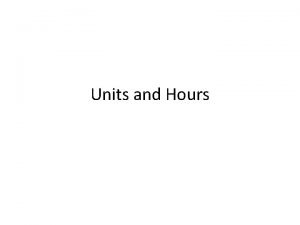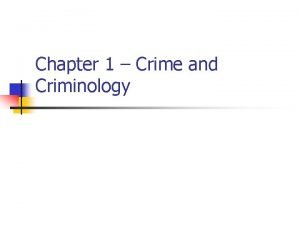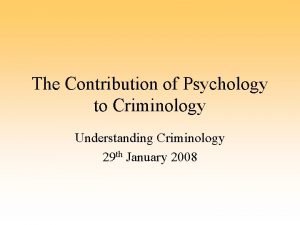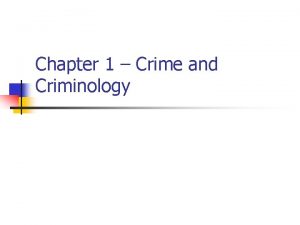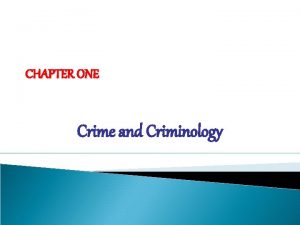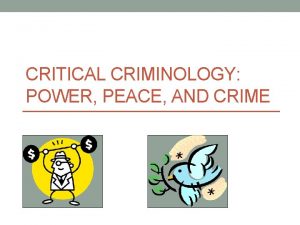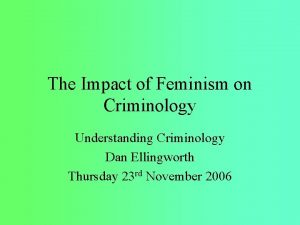Introduction to Canadian Criminology Instructor Office hours Telemail














- Slides: 14

Introduction to “Canadian Criminology” Instructor: Office hours: Tel/e-mail:

“when there is crime in society there is no justice” Plato Criminology: Its nature and structure – WHAT IS A…? Ø Ø Ø Criminal Crime Deviant act Criminologist victim

Setting the stage… n n n Has crime increased? Who commits the most crime? Does capital punishment work? What are the most serious crimes today? Can we control crime?

The crime-deviance continuum n n n Figure 1 -1 Define consensus vs. conflict crimes Examples of: n n Social diversions Social deviations Crime as relative and evolutive Importance of frame of reference

A call for Canadian Criminology n n Crime is universal… so! Differences that count n n n Minorities, law enforcement, sentencing, culture, politics, etc. Significant theoretical and practical contributions Review Canadian criminologists in Appendix 4 (also see Appendix 1)

“Father of Canadian Criminology” with author

The Changing Face of Crime and Criminology n n n Brief history “criminology” and P. Topinard (1879) Initial interest punishment and treatment Secondary evolution of the study of penology Reformers (C. Becarria & J. Bentham)

The subject matter of criminology has been “blurred by shifts of both meaning and focus” N. Walker ‘ 87 n 1920: Maurice Parmalee’s (sociologist) contribution vs. n E. Sutherland n See Appendix 2 – variety of criminology/criminal justice journals

The Criminological Enterprise n n n Criminal statistics Sociology of law Theory construction Types of criminal behaviour Criminal justice system victimology

The Diversity of Criminology n n Sociology: social structure, social process, to social organization (Ch. 7) Psychology: science of individual behaviour (Ch. 6) Biology: chemical, genetic, and/or neurological influences (Ch. 5) Economics: “money the root of all evil”

n n Geography/Environment: crime rates a by-product of physical and environmental factors Political science: the importance of social policy (contrast European and N. A. criminologists)

Integrated and Interdisciplinary approach n n “paradigm shift” from unidiscipline to multi/interdisciplinary perspectives Calls for n n n Integration of social sciences Recognition of the complexity of human behaviour Bridges specific and general aspects of crime

“every man is guilty of all the good he didn’t do” - Voltaire n n Criminology requires bridging theory and policy Social and political challenges Policy in the absence of theory is ‘guess work’ BUT… serious ethical issues n n Punish or treat A crime or deviant act

Summary n n n Crime is a global issue Canada has its own unique concerns Criminology burgeoning in Canada Discipline rapidly evolving in a systematic and objective fashion Criminology an applied science that resembles a living organism
 Instructor office hours
Instructor office hours Canadian office and professional employees union
Canadian office and professional employees union Pan-canadian framework implementation office
Pan-canadian framework implementation office Twu financial aid office hours
Twu financial aid office hours Kent financial aid office
Kent financial aid office Cal state dominguez hills financial aid
Cal state dominguez hills financial aid Marketing an introduction 6th canadian edition
Marketing an introduction 6th canadian edition Tipos de participantes en cursos de capacitación
Tipos de participantes en cursos de capacitación Basic instructor course texas
Basic instructor course texas Basic instructor course texas
Basic instructor course texas Basic instructor course texas
Basic instructor course texas Pepperball training manual
Pepperball training manual Subject verb agreement exercise
Subject verb agreement exercise Instructor vs teacher
Instructor vs teacher Cisco certified trainer
Cisco certified trainer

